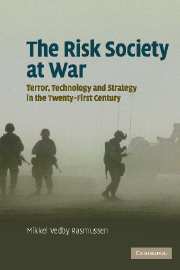Book contents
6 - Conclusions
Published online by Cambridge University Press: 22 September 2009
Summary
Strategy began as a way to rationalise the new military technologies of the seventeenth century. For muskets and guns to be militarily effective the activities of a lot of people needed to be coordinated. Because muskets were not very accurate and because they could produce a continuous rate of fire only if a large number of soldiers lined up and fired in salvos, soldiers had to operate in close formation. This required drill and discipline, as well as what we today call command and control, at a level not seen in Europe since the Roman empire. The new weapons not only required better training for soldiers and more elaborate operating procedures for armies. At this point military technology began to become fundamentally different from the tools and weapons of civilian life. Now, becoming a soldier, and most certainly an officer, demanded training in operating the new weapons systems. Finally, the need for powder and bullets as well as food and other provisions for the new, larger armies placed new demands on military logistics. Strategy provided rational solutions to all of this, and the military academies set up to teach officers how to operate the new military system taught their pupils to think of strategy in modern terms – in terms of means-end rationality.
- Type
- Chapter
- Information
- The Risk Society at WarTerror, Technology and Strategy in the Twenty-First Century, pp. 191 - 206Publisher: Cambridge University PressPrint publication year: 2006

